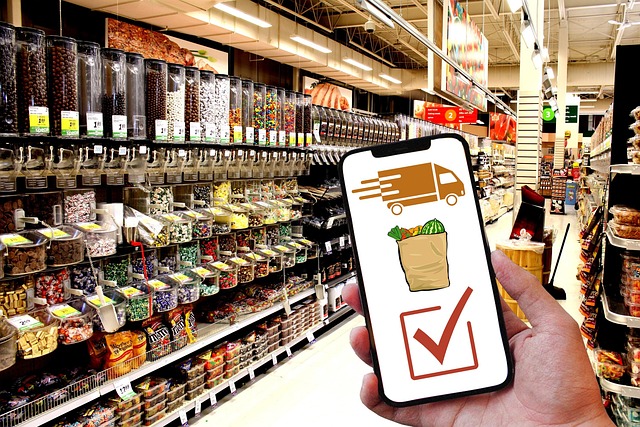Leveraging Micro-Moments to Influence Purchase Decisions
Micro-moments are brief instances when consumers turn to a device to act on a need to learn, do, discover, or buy. For ecommerce teams, recognizing and responding to these moments with relevant personalization, speedy mobile experiences, and timely recommendations can shift intent toward conversion and long-term retention.

Micro-moments are short, intent-driven interactions that shape modern purchase journeys. In ecommerce, these moments often happen on mobile devices, during product research, price checks, or at checkout. Brands that map micro-moments across channels, apply segmentation, and use analytics to optimize content and recommendations can improve usability, increase conversion rates, and strengthen retention. This article outlines practical ways to leverage micro-moments across personalization, checkout flows, mobile design, and pricing strategies.
ecommerce: How do micro-moments fit into online retail?
Micro-moments are woven into everyday ecommerce behavior: a search for product specs, a quick price comparison, or an impulse add-to-cart. Treat each interaction as a potential conversion event by aligning site content, inventory signals, and pricing with user intent. Inventory data should feed real-time availability cues; product pages should highlight benefits and comparisons; segmentation ensures the right messaging reaches first-time visitors versus repeat shoppers. When these elements work together, micro-moments become structured opportunities to guide shoppers toward purchase decisions.
personalization: What personalization works in micro-moments?
Personalization needs to be context-aware and privacy-respecting. Use session signals and prior behavior for short-term personalization—such as prioritized product facets, recently viewed items, or dynamic banners that reflect current search queries. Combine this with longer-term segmentation to create continuity across visits. Personalization that shortens decision time during a micro-moment—by surfacing compatible sizes, shipping options, or common add-ons—can reduce friction and improve conversion likelihood without appearing intrusive.
recommendations: How should recommendations respond to intent?
Recommendations should be timely and aligned with the micro-moment. In a discovery moment, emphasize complementary products and curated lists; in a purchase-ready moment, surface best-fit SKUs, in-stock options, and bundled savings. Use simple collaborative filtering for immediate relevance and contextual rules (e.g., ‘‘available tomorrow’’) for conversion-focused recommendations. Track click-through and add-to-cart behavior to refine models; recommendations that anticipate user needs during a micro-moment can increase average order value and speed up the buying decision.
conversion and checkout: How can checkout be optimized for micro-moments?
Checkout optimization centers on reducing time and cognitive load. Offer saved-payment options, guest checkout, and one-click flows where appropriate. Clear progress indicators, transparent pricing, and minimal form fields matter especially when users act in short windows of intent. Address common abandonment triggers—unexpected shipping costs, long delivery times, or missing promotions—by surfacing pricing and shipping information earlier in the flow. Combining analytics and A/B tests helps identify which checkout touches are most critical during micro-moments and which changes yield measurable conversion lifts.
mobile and usability: What mobile practices support quick decisions?
Mobile usability is critical because many micro-moments start on phones. Prioritize fast page loads, responsive product images, and a simplified navigation that gets users to key information in one or two taps. Use mobile-optimized search, voice query handling where relevant, and compact product summaries that highlight price, delivery estimate, and returns policy. Usability testing focused on short task completion times reveals friction points: streamline those flows to match how users act in the moment. Mobile-first analytics will show where micro-moments are lost and where to focus optimization efforts.
pricing and inventory optimization: What cost considerations and providers support micro-moment strategies?
Pricing and inventory signals must be accurate and visible during micro-moments to avoid abandonment. Dynamic pricing, real-time inventory updates, and clear shipping options help convert intent into purchase. Many ecommerce platforms and tools can support these needs; the table below compares common solutions and gives approximate cost ranges to consider.
| Product/Service | Provider | Cost Estimation |
|---|---|---|
| Hosted ecommerce platform (entry to mid) | Shopify | $29–$299 per month (plans vary by features) |
| Hosted ecommerce platform (alternative) | BigCommerce | $29–$299 per month (tiers based on sales volume) |
| WordPress ecommerce + plugin | WooCommerce (hosting) | Hosting $5–$50/month; extensions may add $0–$200+ annually |
| Open-source commerce + self-hosting | Magento / Adobe Commerce | Hosting and maintenance $20–$500+/month depending on scale |
Prices, rates, or cost estimates mentioned in this article are based on the latest available information but may change over time. Independent research is advised before making financial decisions.
Conclusion
Micro-moments compress decision windows but increase the number of touchpoints where brands can influence purchases. By integrating ecommerce platforms with real-time inventory and pricing, applying contextual personalization, delivering relevant recommendations, optimizing mobile usability, and simplifying checkout, organizations can convert short bursts of intent into measurable revenue and improved retention. Continuous analytics and iterative testing are essential to refine micro-moment strategies and maintain alignment with evolving user expectations.





